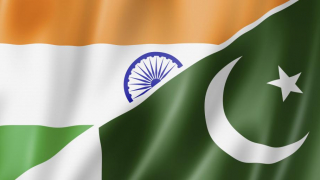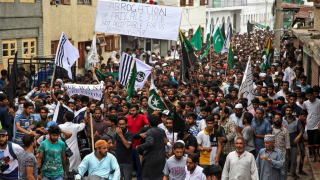RAW the Silent Saboteur in Balochistan
When a covert war rages beneath the surface, the bloodshed isn't limited to battlefields; it's inked into the blueprints of espionage. India's RAW isn't just watching Balochistan—it’s pulling the strings in a deadly game of geopolitics. The increase in violence in Balochistan and the brutal strikes that took place on August 26, 2024 where 73 people lost their lives, show the sponsored interference by RAW. As soon as the first fragments of the footage of the attack occurred in Balochistan began to appear, they were initially shown in the Indian media, after which the videos appeared in international and Pakistani media. This sequence of events points to RAW involved in sabotage. The timing of this propaganda makes one believe that there was a planned standpoint to influence the flow of event and magnify the effects of the attack. Since the videos were released tactfully it is clear that RAW had a hand in planning the attack and the propaganda that followed it.
These attacks were made on the day which was covered by visit of Commander of the Ground Forces of the People’s Liberation Army of China General Li Qiaoming to Pakistan and his meeting with the Army Chief at the GHQ. The terrorist attacks of the BLA can be analyzed from multiple angles firstly it was a message to China to stop supplying help and coordination with Pakistan. Secondly, trying to cause damage to the CPEC and Gwadar Port Project, and Lastly, provoking an ethnic conflict in Pakistan. Later, the commander of the banned BLA warned not only Pakistan but also China too. It appears more like the regional and international powers are the ones benefiting from the idea of preventing China from carrying out cooperation with Pakistan and the implementation of the CPEC in Opening up than the local people of the Province. On the contrary, people of Pakistan should consider these two agendas as being more important towards the growth of the Province. CPEC and Operationalization of Gwadar Port can benefit the local population more than any other area in Pakistan. These two projects will stimulate the economic activities of the province, opening up plenty of employment opportunities for the people of Balochistan. This is not an incident that has occurred in isolation, rather it is an incident which aligns with a seventy-year organized and systematic effort by India to weaken Pakistan by eradicating its territorial integrity and to precipitate crises in its most volatile provinces. There is no doubt; the consequences are far-reaching for geopolitics of the world. RAW in Balochistan has, of course, a planned strategy aimed at destabilizing Pakistan.
The August 2024 attacks are a new level of escalation by India. The recent attacks in Balochistan represent a significant escalation in violence, with the BLA carrying out a coordinated series of assaults across the province. The brutality of these attacks, including the cold-blooded execution of 23 Punjabi passengers based on their ethnicity, marks a new level of savagery in the ongoing conflict. This escalation raises serious questions about the external support that the BLA is receiving, pointing to RAW as the primary benefactor.
Pakistan on many occasions has witnessed Indian hands to subvert Pakistan, and India’s interference in Balochistan is not new. India’s involvement in this regard can be traced back in the year 1948 when it started supporting insurgencies in the region.” In the recent years the approach of Indian intelligence has become more complex with RAW acting as a key perpetrator of terrorism and instigating the insurgent groups such as the Balochistan Liberation Army (BLA). One of the bigger indications came in March 2016, Pakistani authorities apprehended Kulbhushan Yadav, an active Indian navy officer in Balochistan. Yadav admitted that he was involved in the Baloch insurgents with RAW and assisted in conducting terrorist activities. This arrest was not unique; it was sitting in a continuum of Indian subversion that has continued despite Pakistan’s outrage.
Pakistan in November 2016, expelled eight officials of Indian High Commission in Islamabad for spying for Baloch separatists and Tehreek-e-Taliban Pakistan (TTP). Such expulsions also served to expose India’s intelligence activities in plotting against Pakistan by supporting the terrorists.
Pakistan submitted a dossier to the United Nations Secretary-General in January 2017 that contains evidence of RAW’s implication in terrorist activities in Balochistan, FATA, and Karachi that should have opened the eyes of the international community. Ayesha Siddiqa, an influential political and military analyst in Pakistan has pointed out it such raids show the evolution of the capacity of the BLA to target softer targets as well as hardened ones. This increase in operational capability points to the fact that the BLA has some external support in terms of money most probably from India to undertake such a complex and lethal operation.
The fact that all these attacks happened in the heels of internal political turbulence in Pakistan and a large scale military operation against the TTP (Fitna Al Khawarij) points towards a well-orchestrated plan to compel Pakistan to divert their security forces to multifaceted fronts thereby aggravating the situation in the region.
India is involved in Balochistan for supporting separatists and for weakening Pak to halt the strategic projects including CPEC to destabilize the country. The CPEC involving Gwadar deep sea port is a critical project of Pakistan’s development plan and is a part of China’s Belt and Road connected plan. India’s stance against the CPEC and pledging support to groups like the BLA is an effort to derail this project. Projects under construction by Chinese companies especially in Balochistan region have been attacked by terrorists with the BLA taking credit for most of the incidents involving Chinese persons and assets. The attacks have impacted the relationship between Pakistan and China especially because the latter has been increasingly concerned with the safety of its investments in the area.
Indian approach towards fostering proxy groups to destabilize Balochistan and endanger the CPEC infrastructure is against the international law and threatens regional security. As seen, India’s support for terrorism in Pakistan jeopardizes not only Pakistan’s security but also puts stability of the entire South Asian region at peril.
RAW is actively involved in precipitating the conflict in the region. This strategy is positioning India as a dominant power in South Asian region while sabotaging projects which are fundamental to Pakistan’s growth such as CPEC. There is rising call for more pressure and accountability on India to stop backing terrorism in Pakistan.














